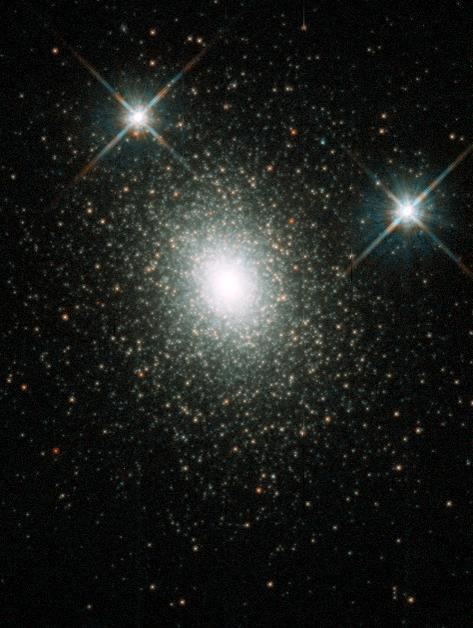Declination +39° 34′ 39.7″ Mass 1×10 M☉ (2×10 kg) | Right ascension 00 32 46.51 Apparent magnitude (V) +13.8 | |
 | ||
Distance 2.52 ± 0.14 Mly (770 ± 40 kpc) | ||
Mayall II, also known as NGC-224-G1, SKHB 1, GSC 2788:2139, HBK 0-1, M31GC J003247+393440 or Andromeda's Cluster, is a globular cluster orbiting M31, the Andromeda Galaxy.
It is located 130,000 light-years (40 kpc) from Andromeda Galaxy's galactic core, and is the brightest (by absolute magnitude) globular cluster in the Local Group, having an apparent magnitude of 13.7. Mayall II is considered to have twice the mass of Omega Centauri, and may contain a central, intermediate-mass (∼ 2×104 M⊙) black hole.
It was first identified as a possible globular cluster by American astronomers Nicholas Mayall and O.J. Eggen in 1953 using a Palomar 48-inch (1.2 m) Schmidt plate exposed in 1948.
Because of the widespread distribution of metallicity, indicating multiple star generations and a large stellar creation period, many contend that it is not a true globular cluster, but is actually the galactic core that remains of a dwarf galaxy consumed by Andromeda.
